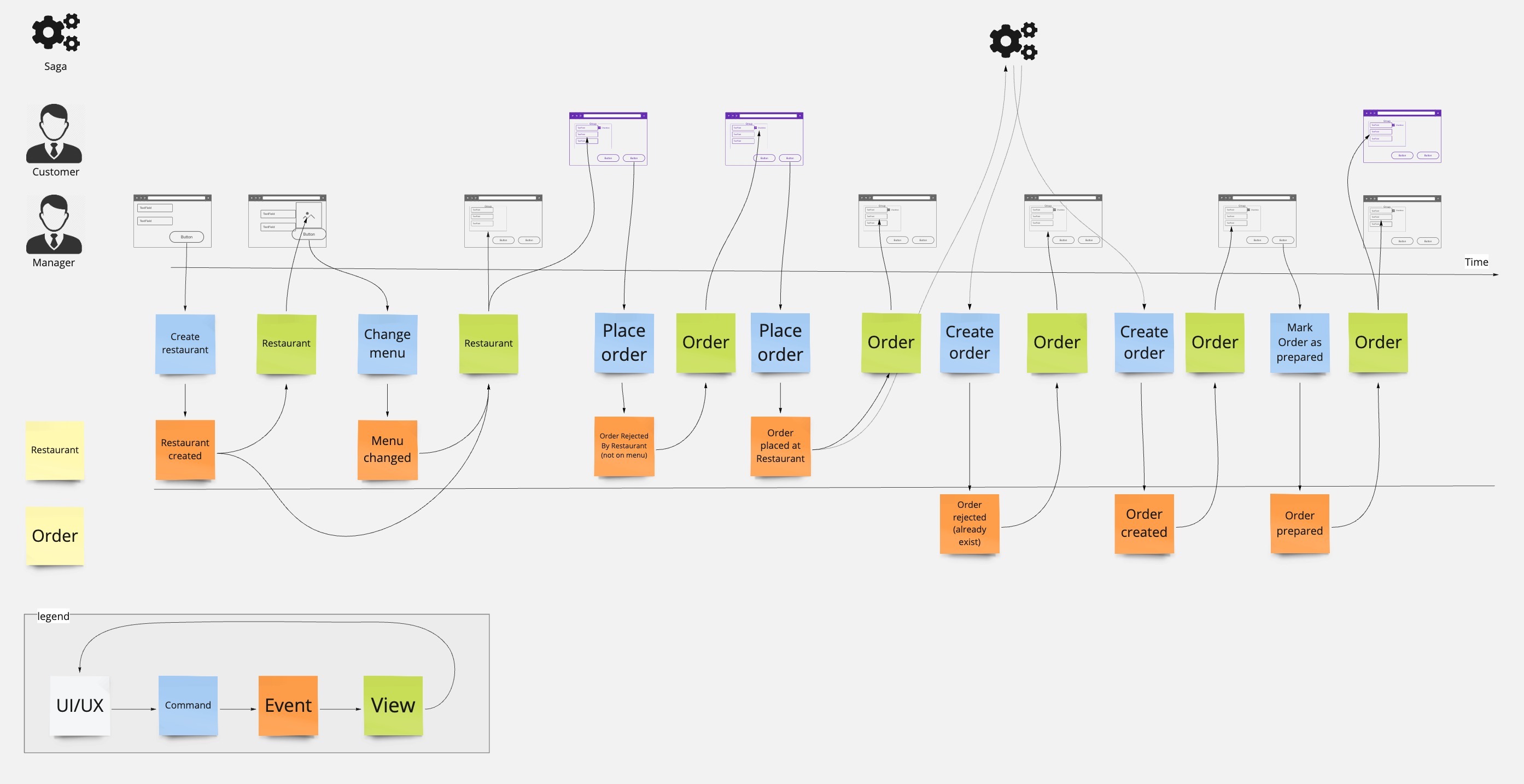Discovering the Domain
There are numerous techniques to discover a domain. Event Storming is a particularly interesting one. It is a workshop format for quickly exploring business domains, engaging both Domain Experts and Software Developers.
Event Modeling adopts Event Storming sticky notes. The final piece was the UI/UX aspects to complete what more resembles a movie story board (white board - or digital white board). While Event Storming focuses in discovering the problem space, Event Modeling creates a blueprint for a solution.
- It is a method of describing systems using an example of how information has changed within them over time.
- It is a scenario-based and UX-driven approach to defining requirements.
On a higher level of abstraction, any information system is responsible for handling the intent (Command) and, based
on the current State, produce new facts (Events). The system’s new State is then evolved out of these Events.

- User submits the form on the page by clicking on the button
- The intent to change the system is explicitly captured/modeled as a Command/
C. - Command is handled by the decider component, which State/
S(yellow) is represented in the swim-lane at the bottom. - Based on the current State and the Command it received, the Decider will make new decisions/Events/
E - New Events will update/evolve the State of the Decider (yellow), and the View (green)
- The View state is constructed per need to serve specific pages with data. Every page can have its View.
'FModel' is offering implementation of this blueprint in a very general way.
The implementation is parametrized with C/Command, E/Event, and S/State parameters.
The responsibility of the business is to specialize in their case by specifying concrete Commands, Events, and State.
For example, Commands=CreateOrder, MarkOrderAsPrepared; Events=OrderCreated, OrderPrepared, State=Order(with list
of Items).

Customers use the web application to place food orders at local restaurants. Application coordinates a restaurant/kitchen order preparation.
Let's learn how to structure the data/information and how to effectively model the behaviour in TypeScript, by example!